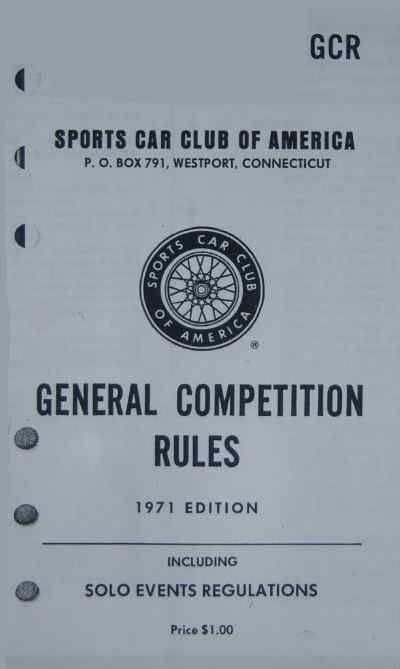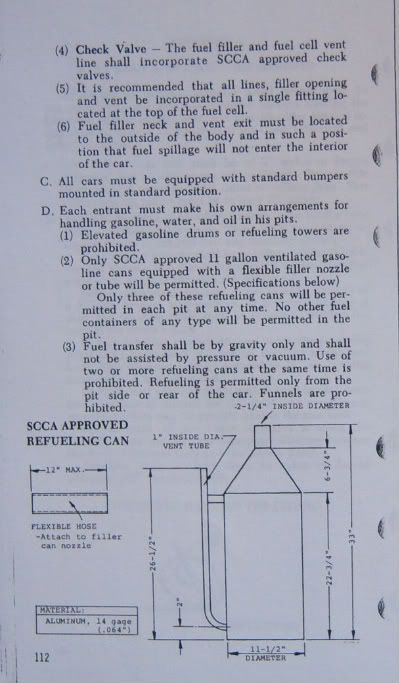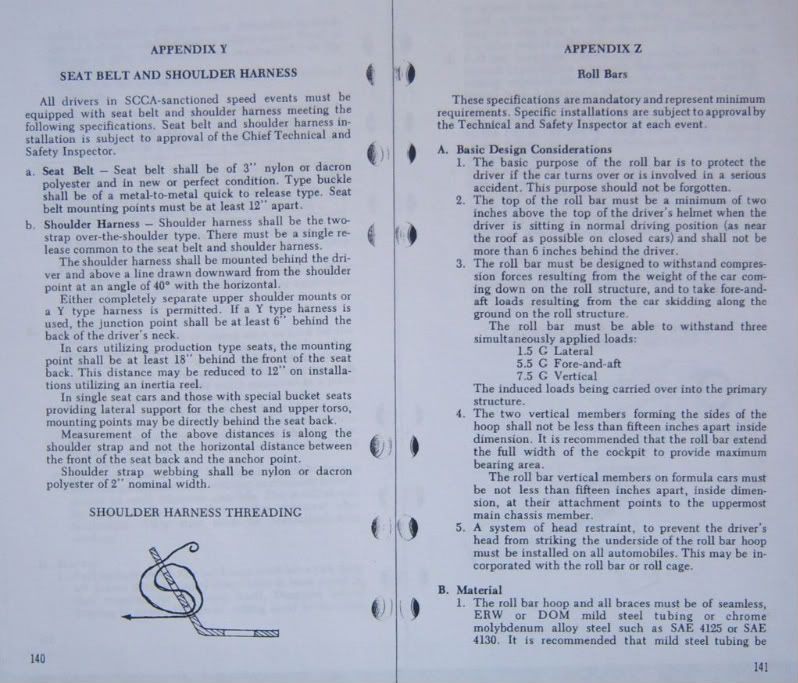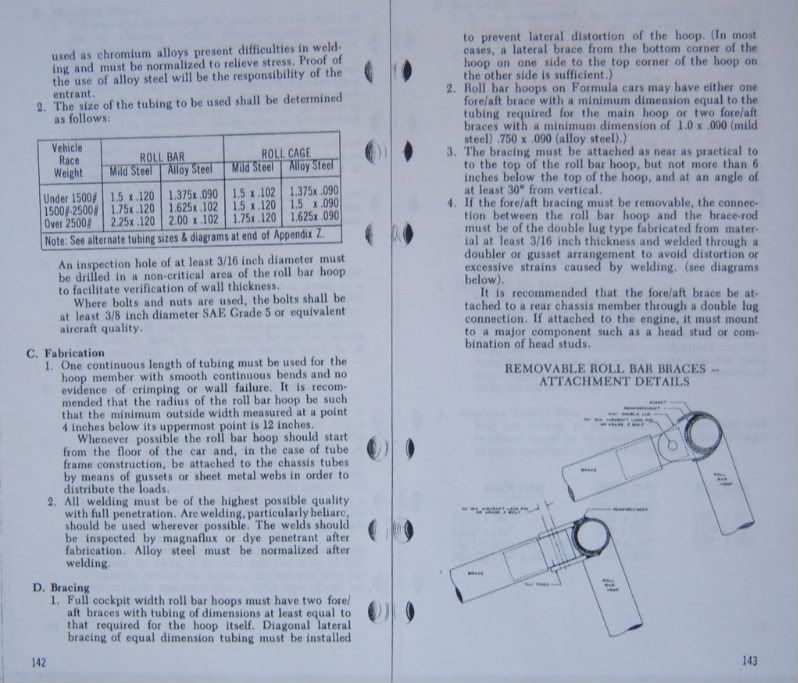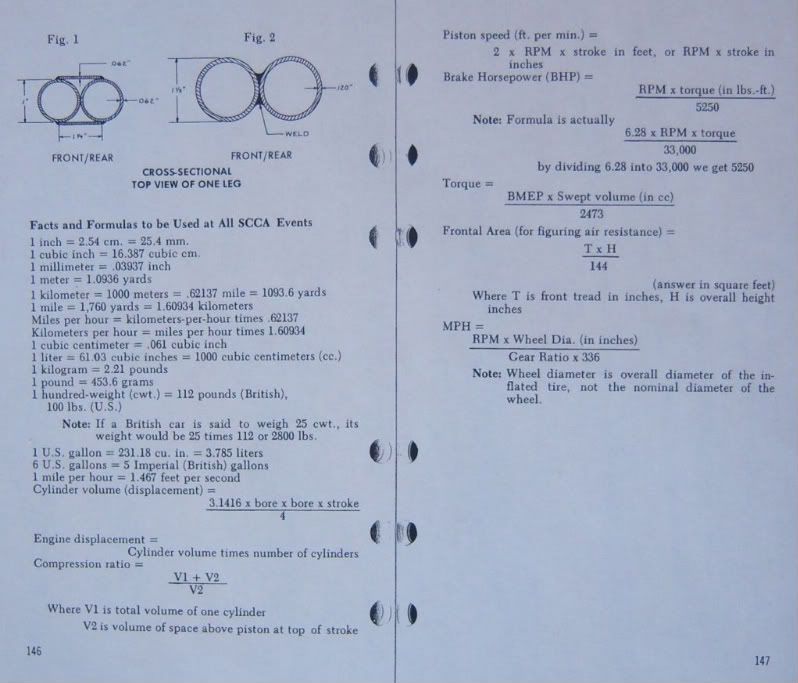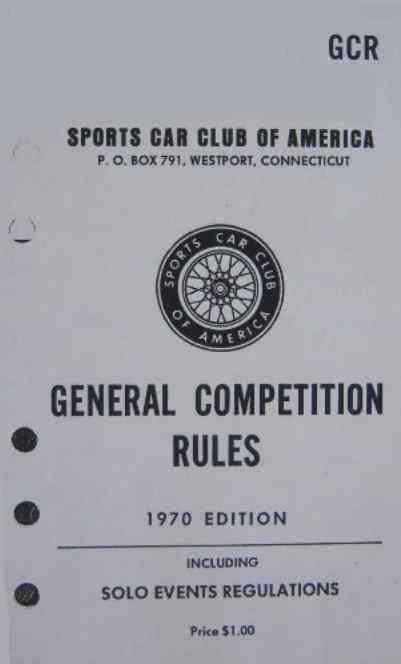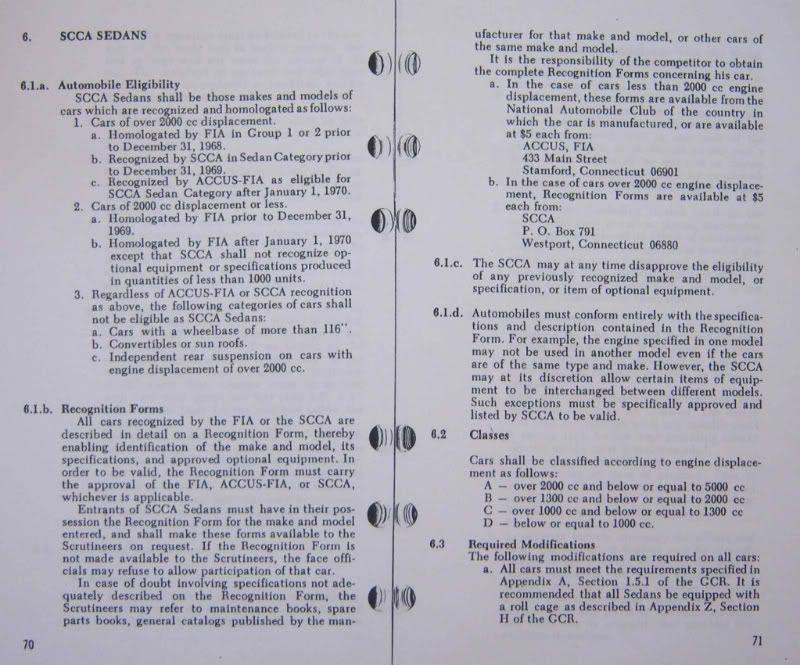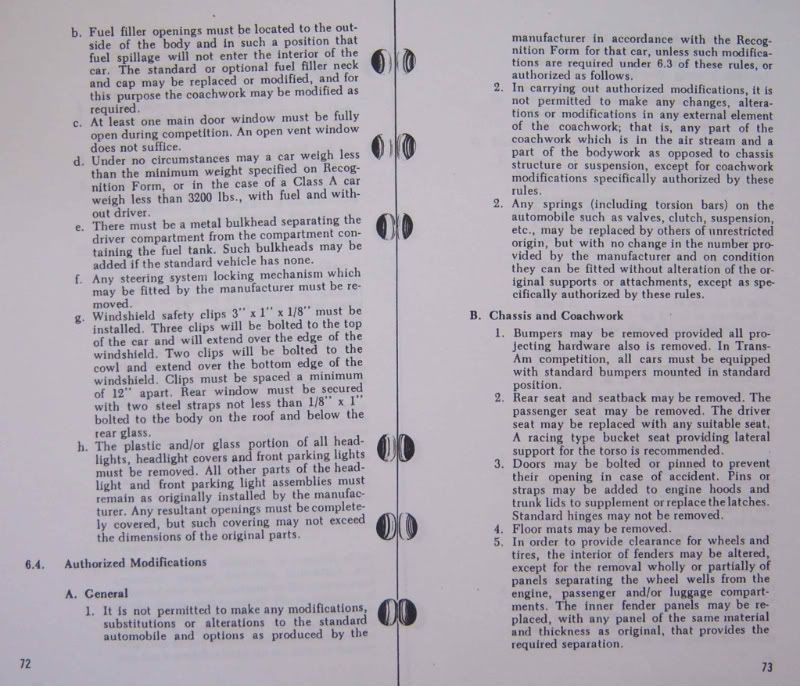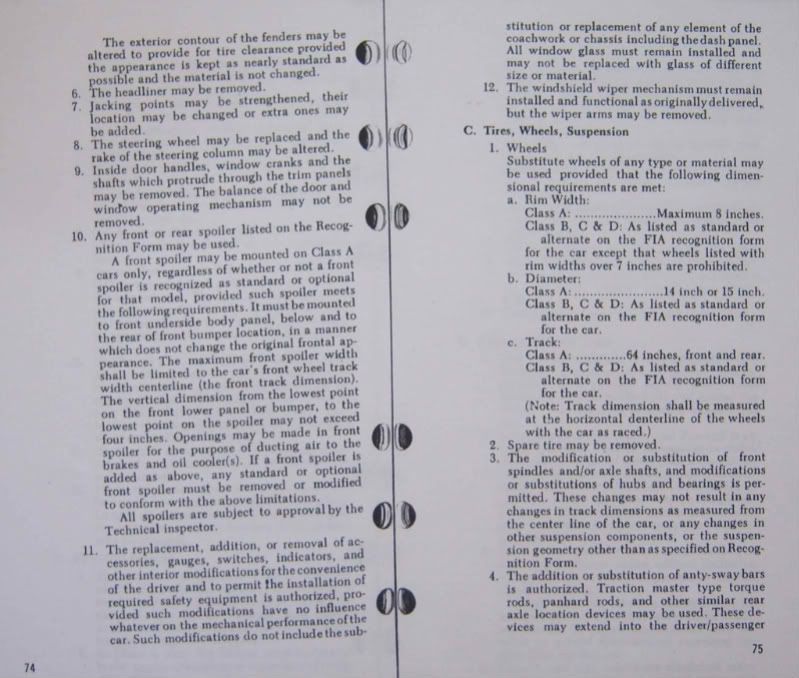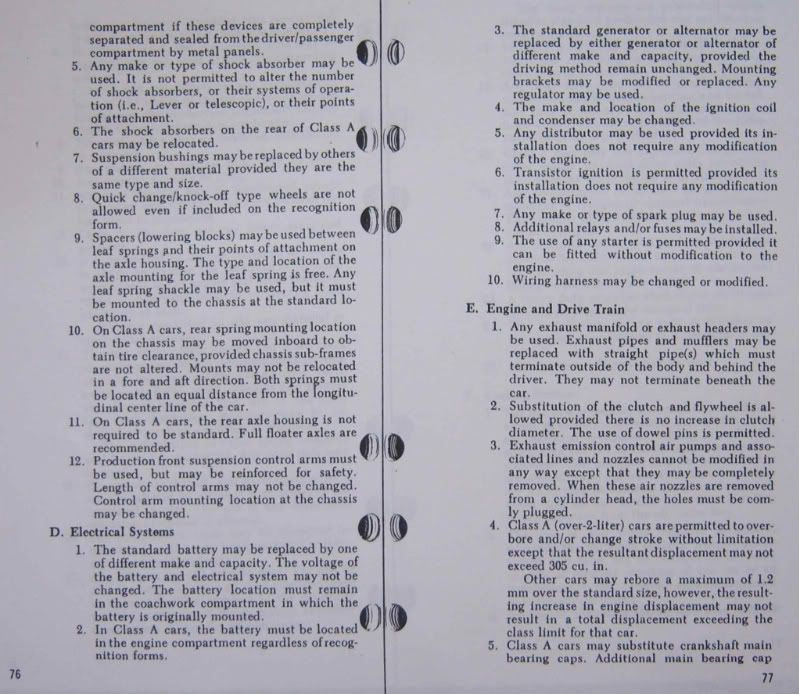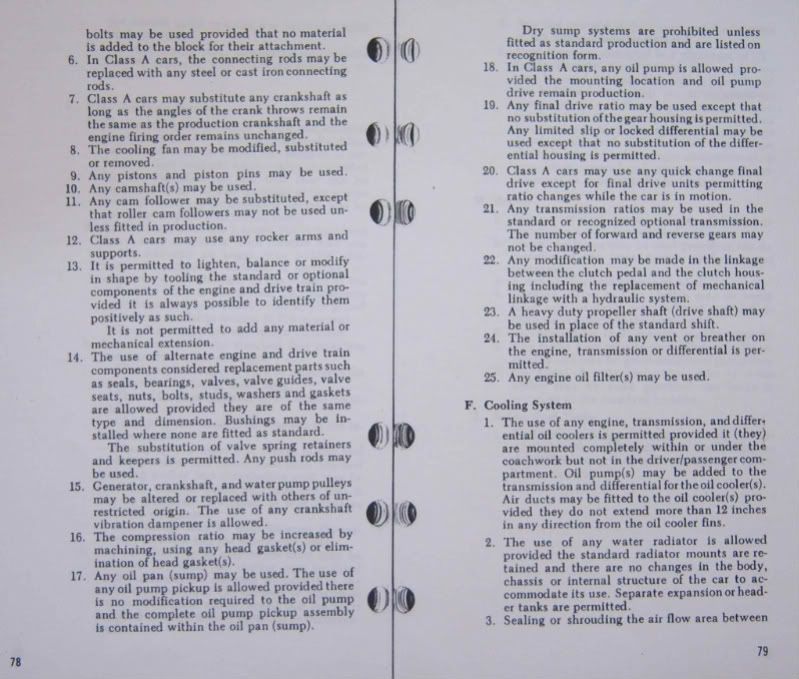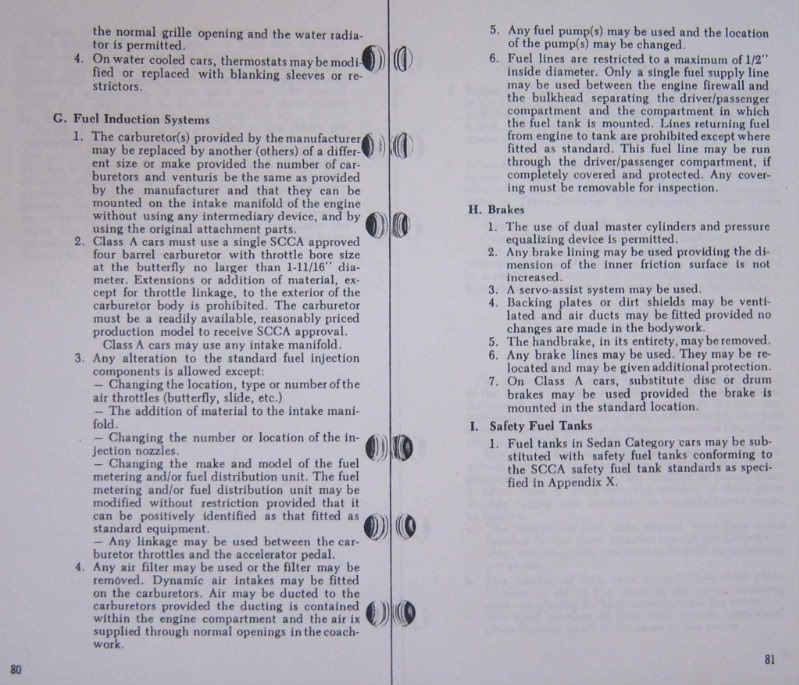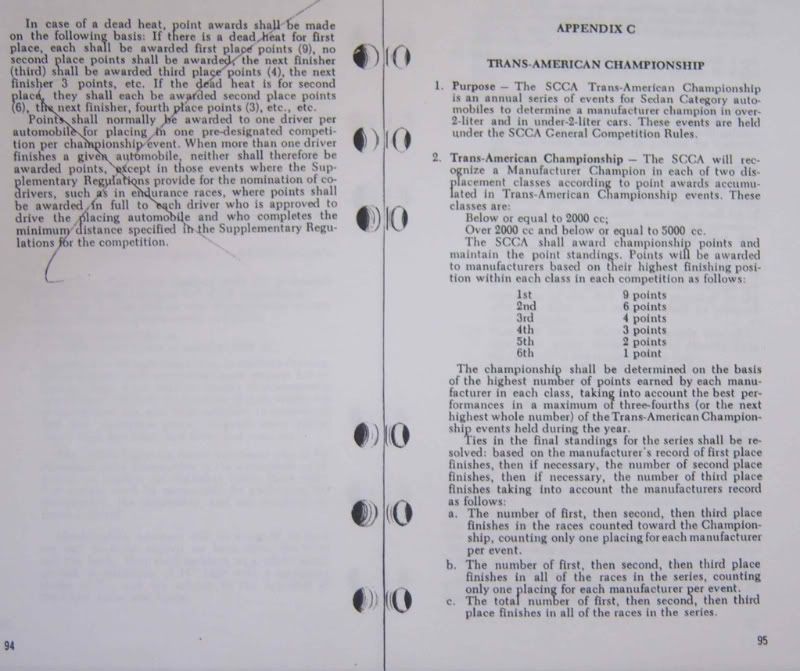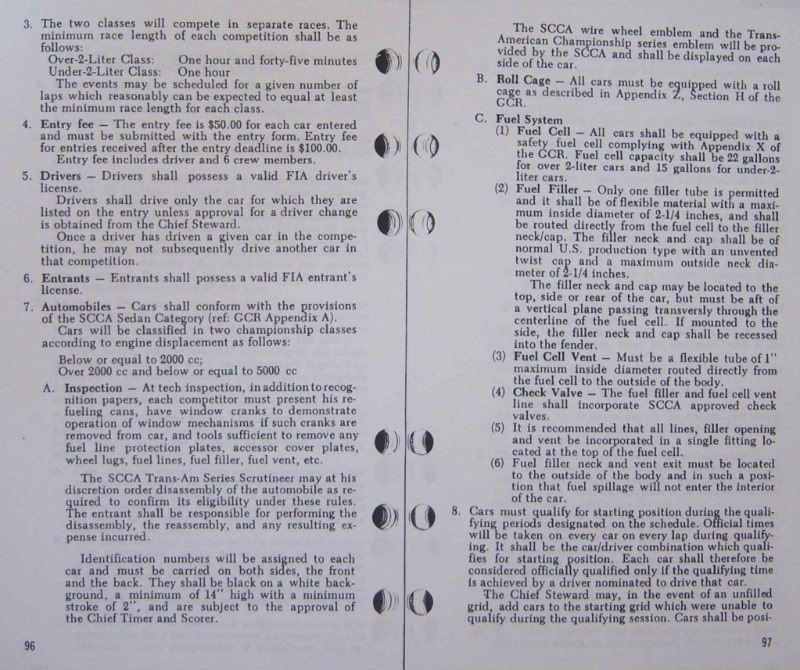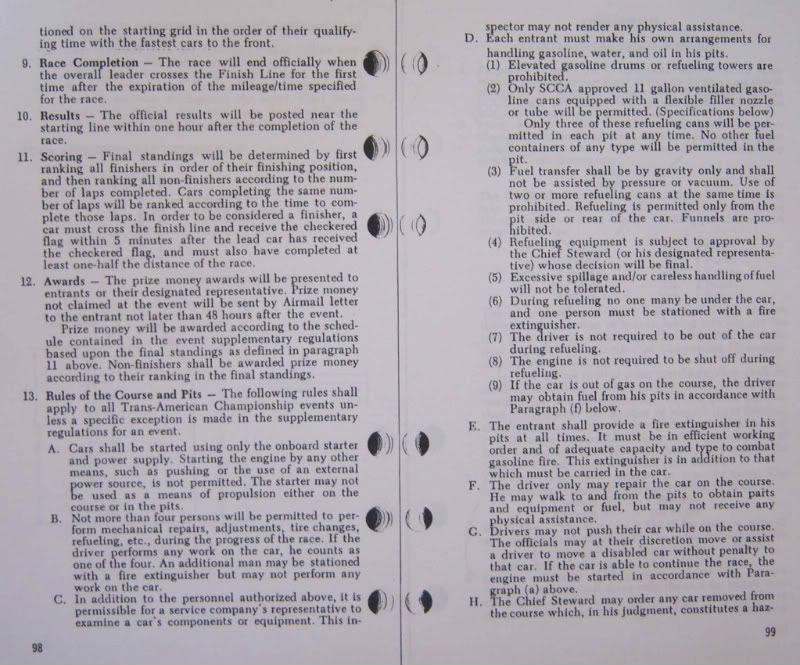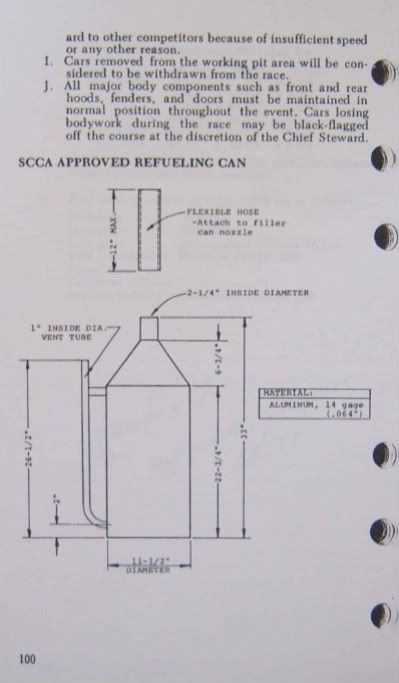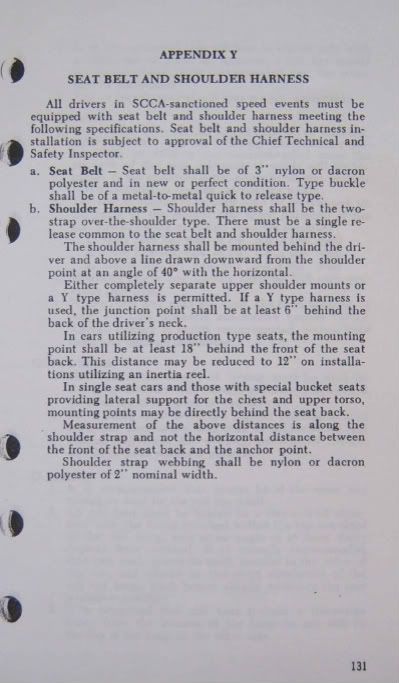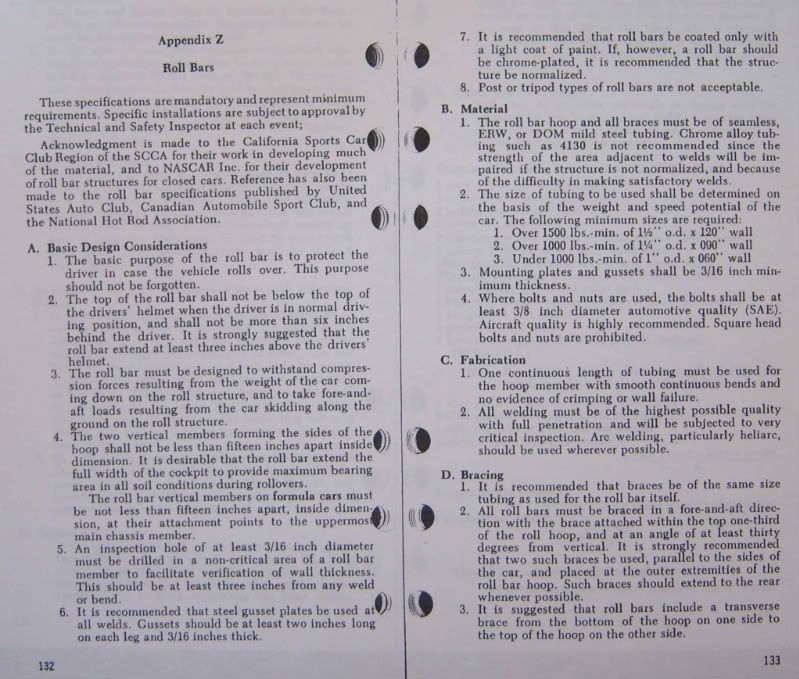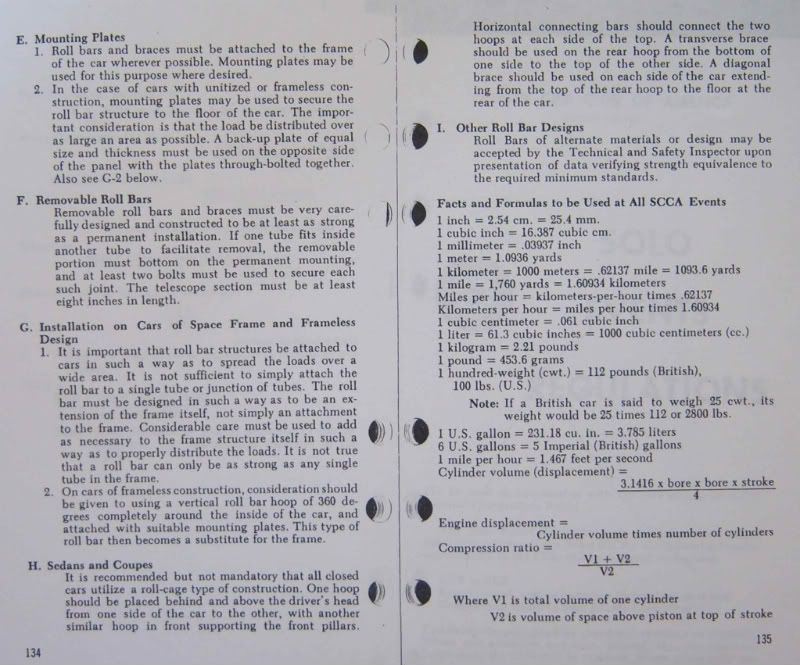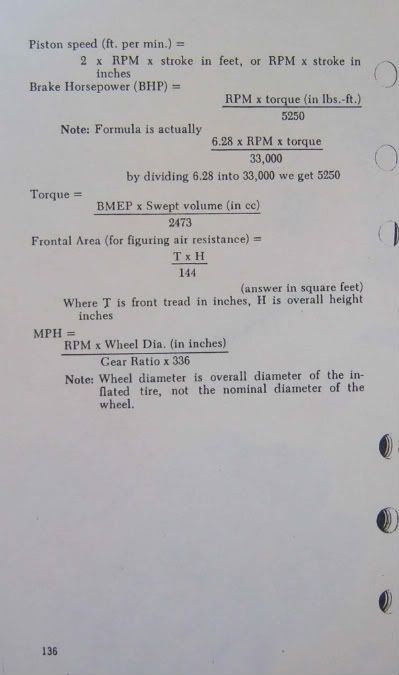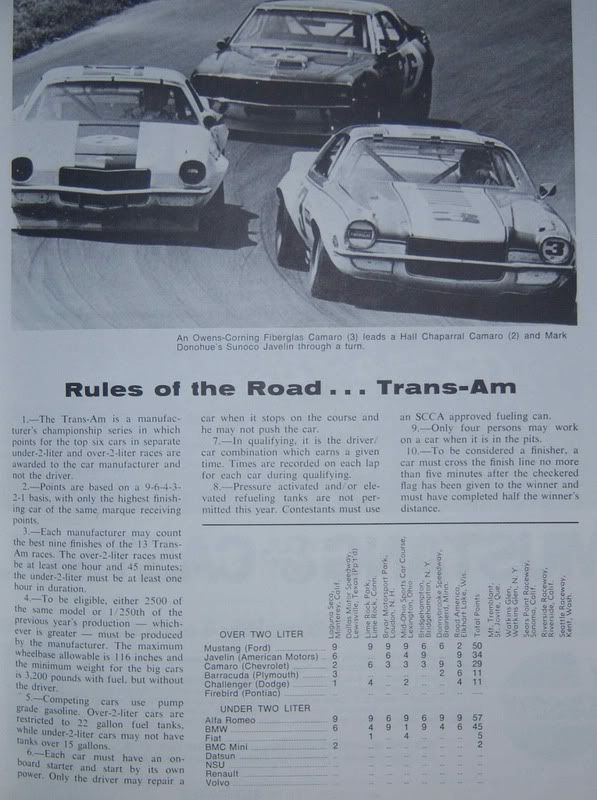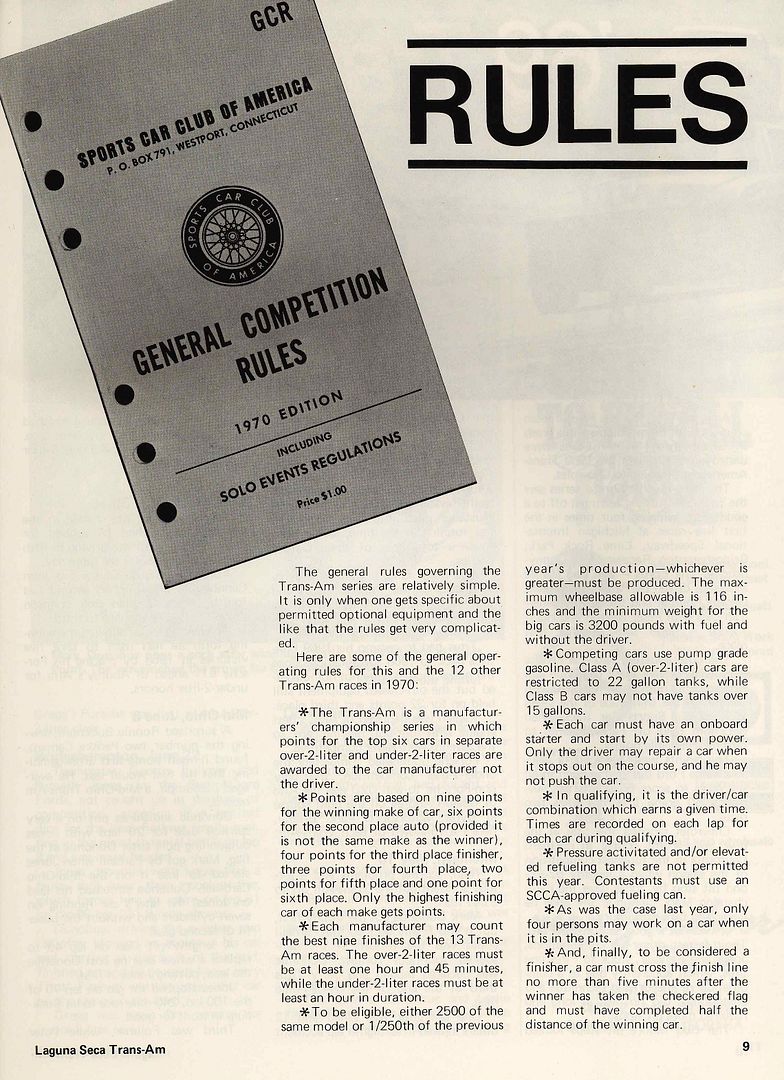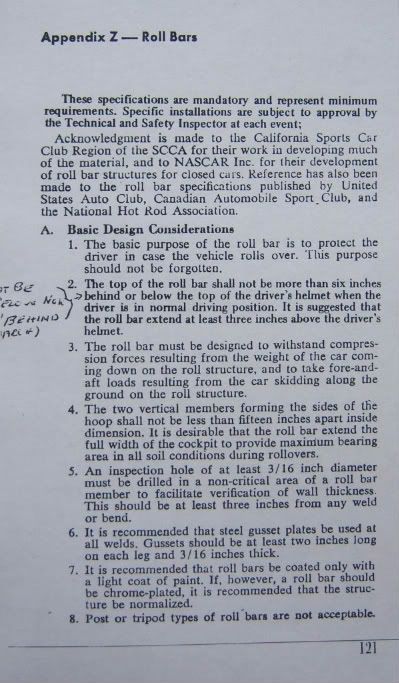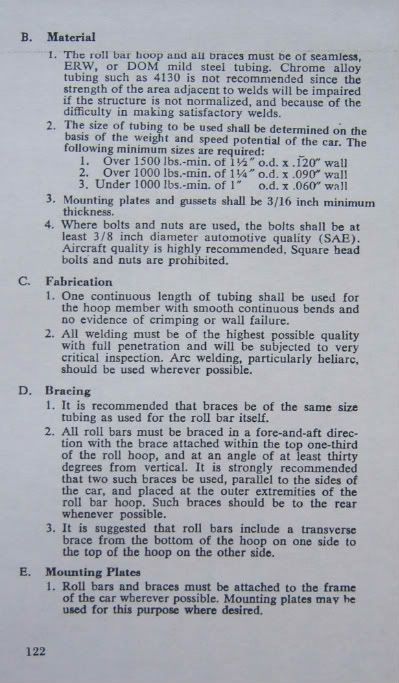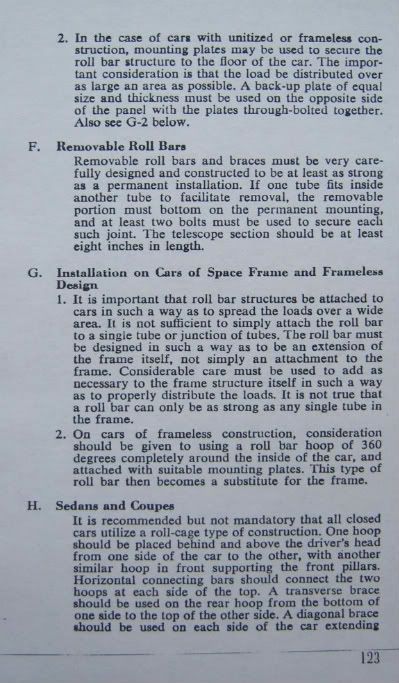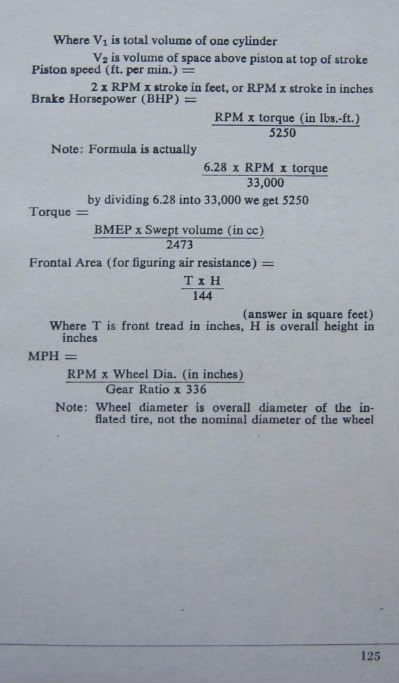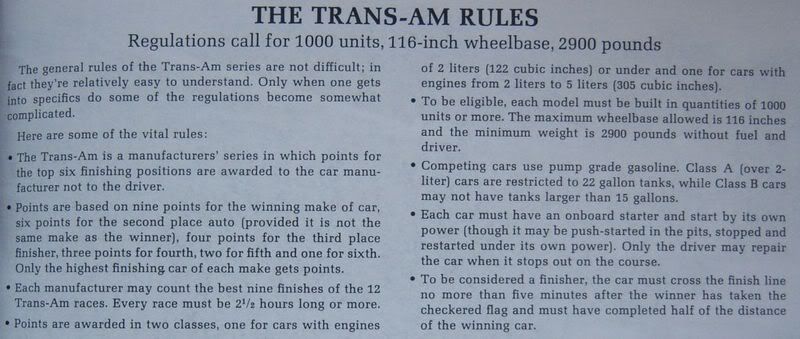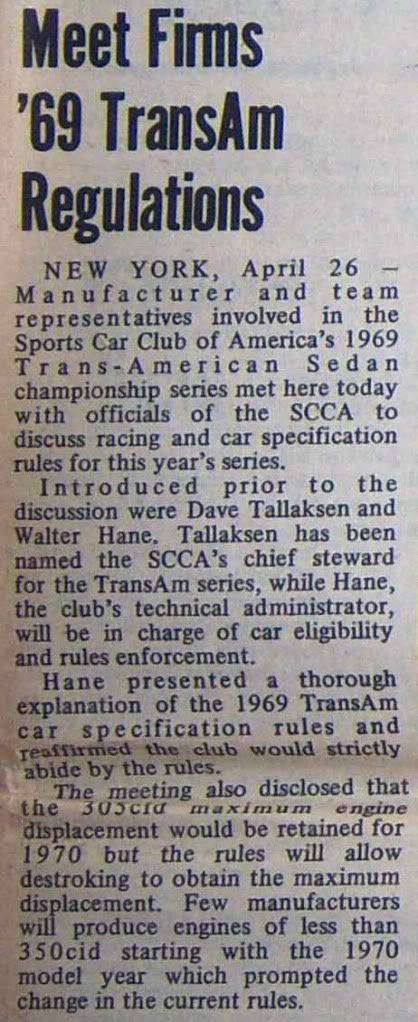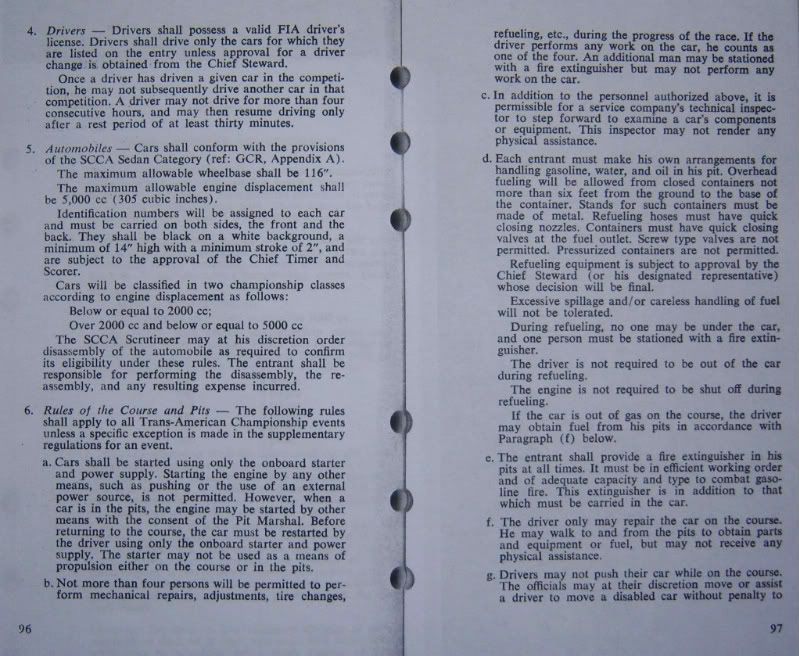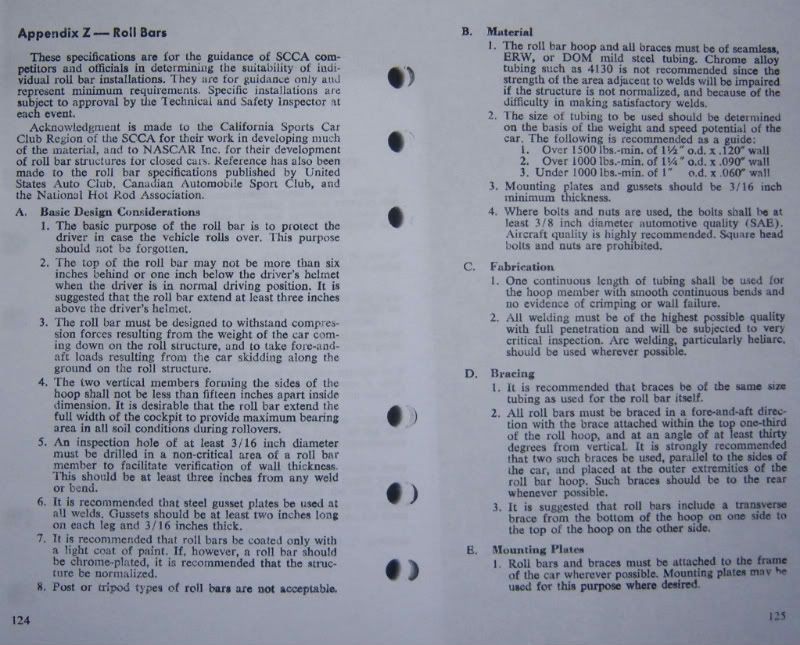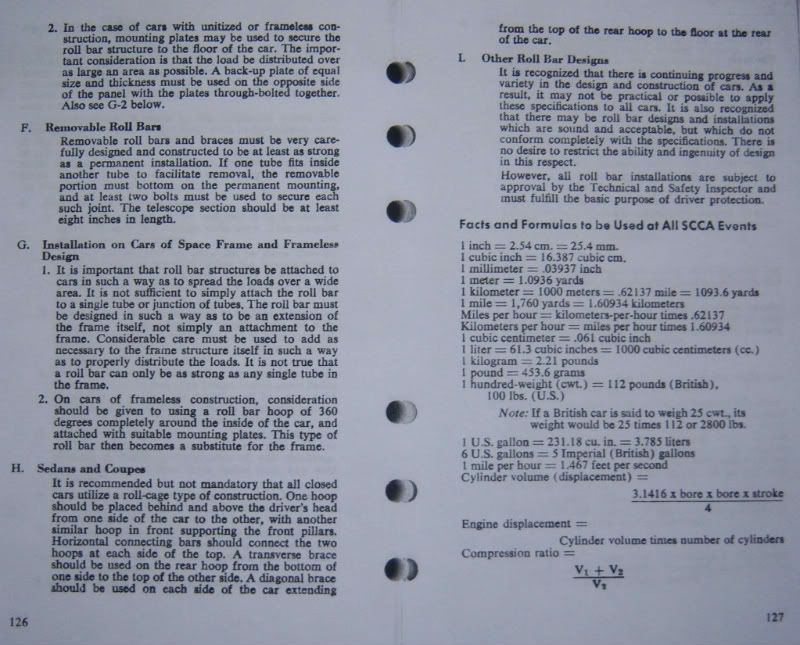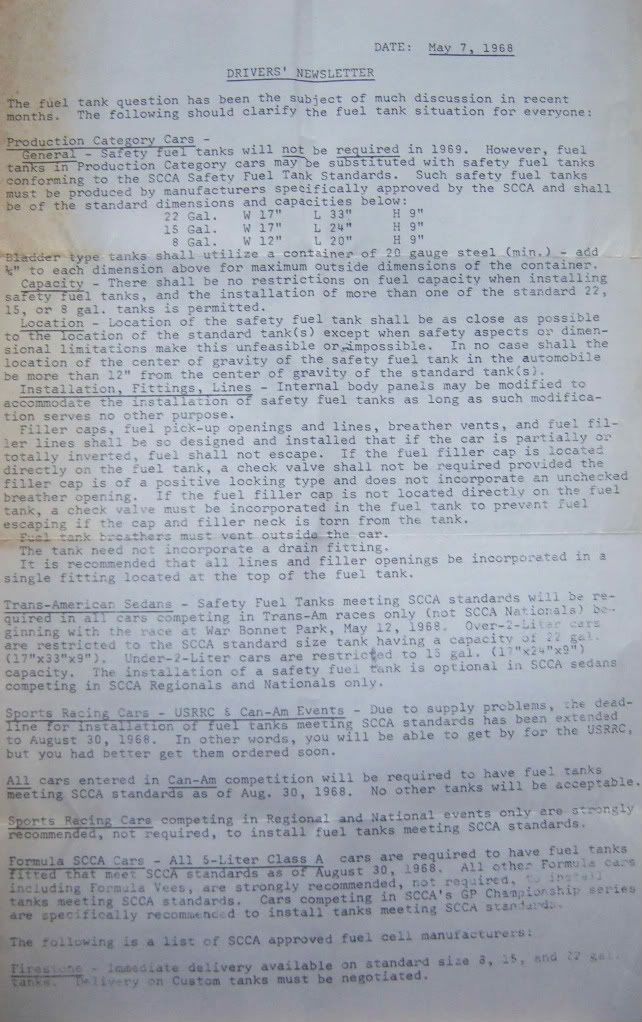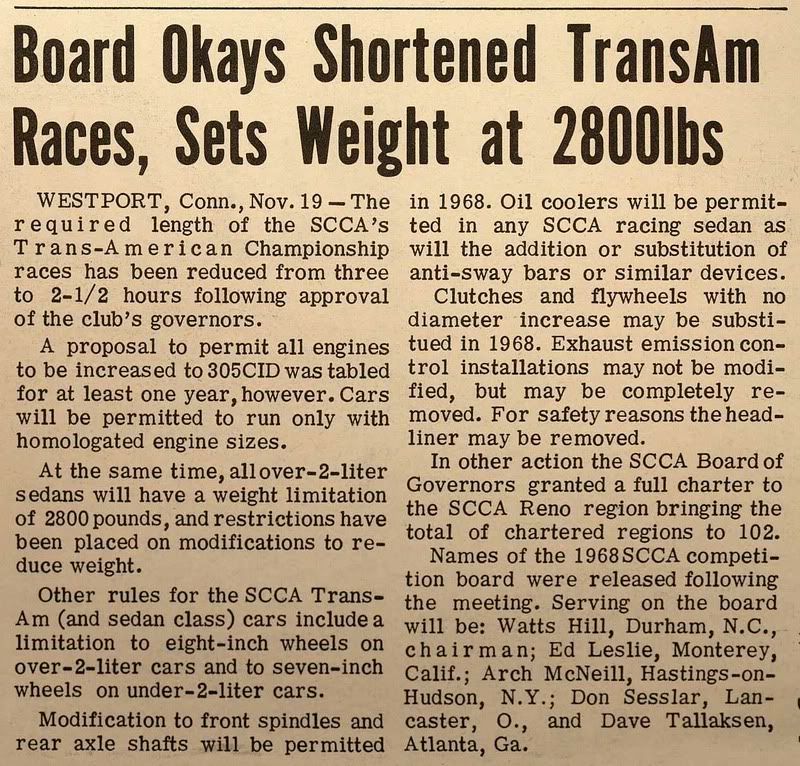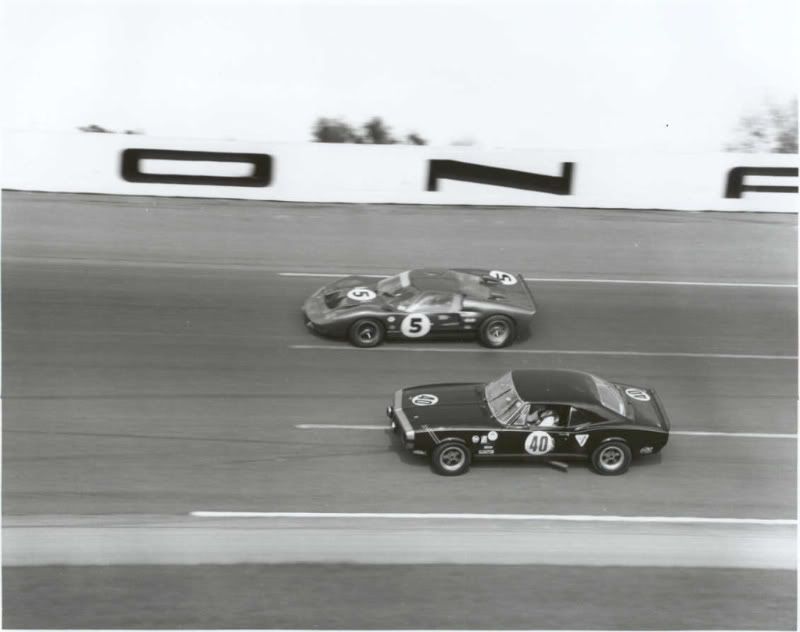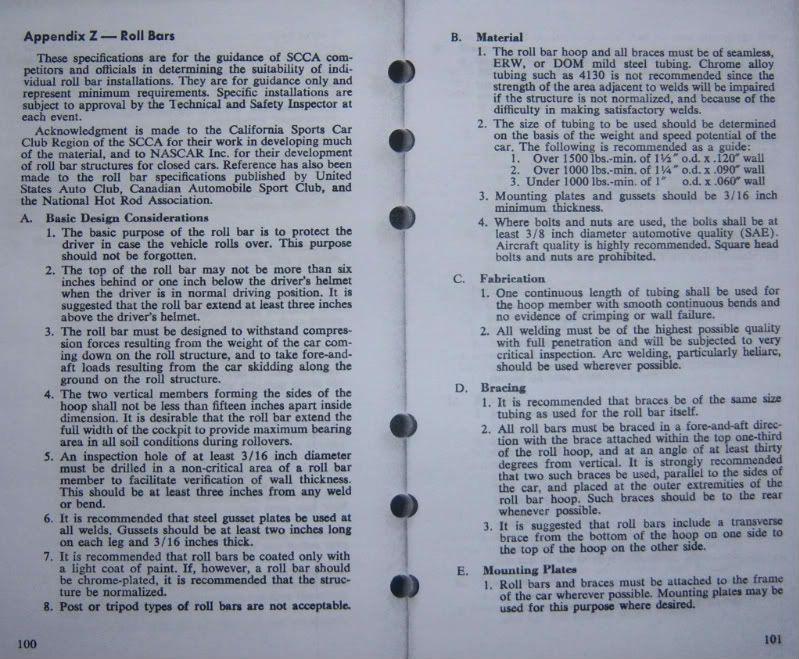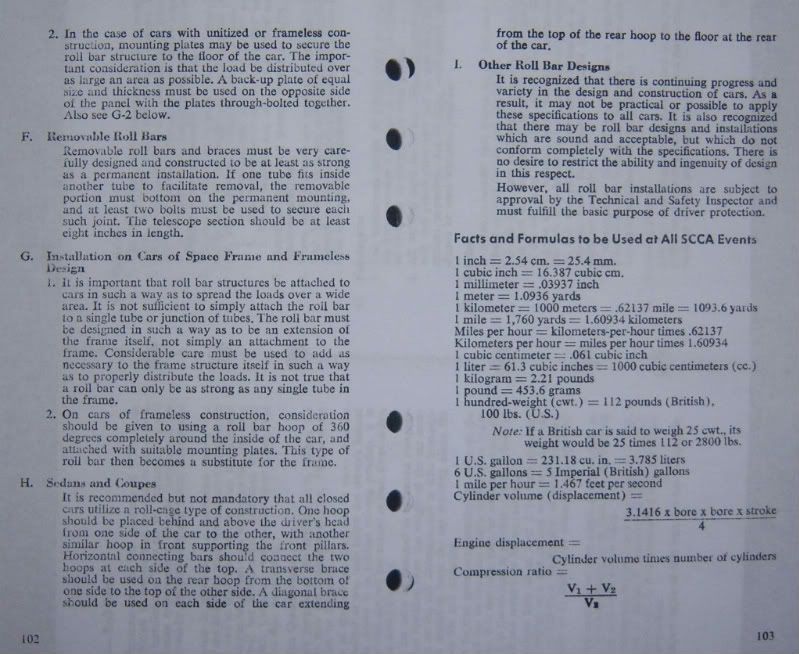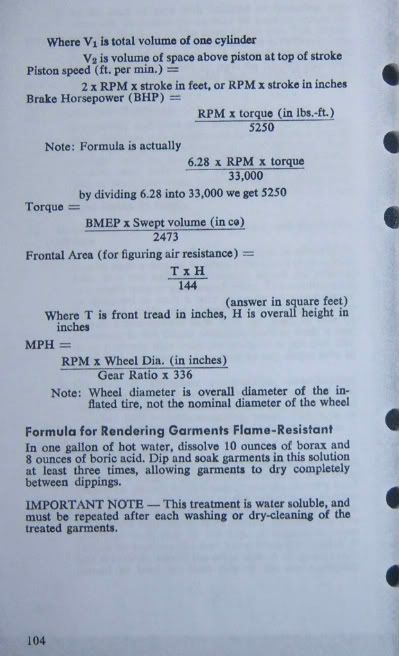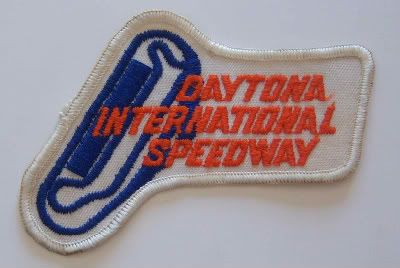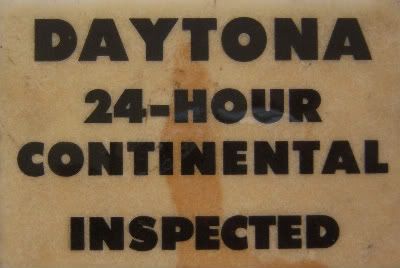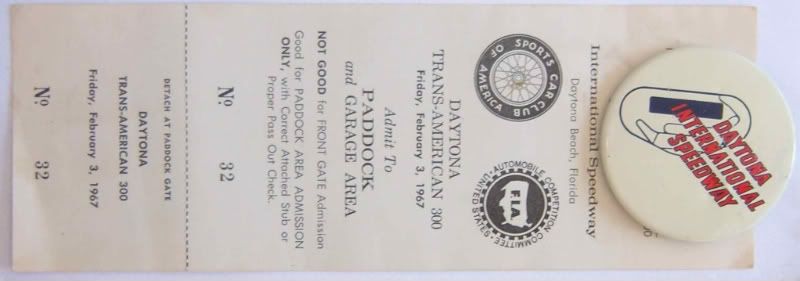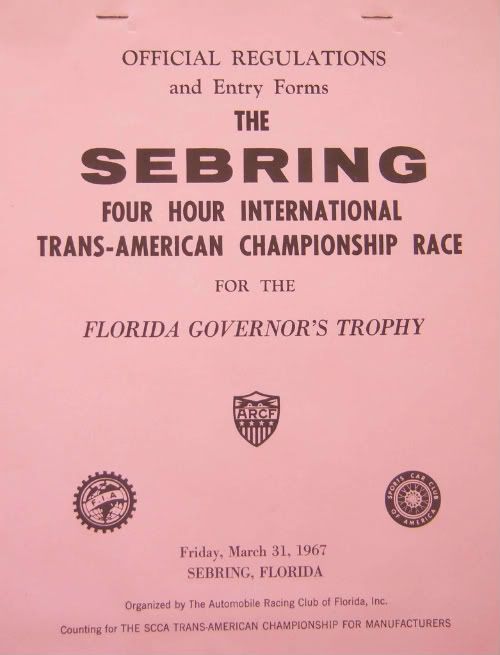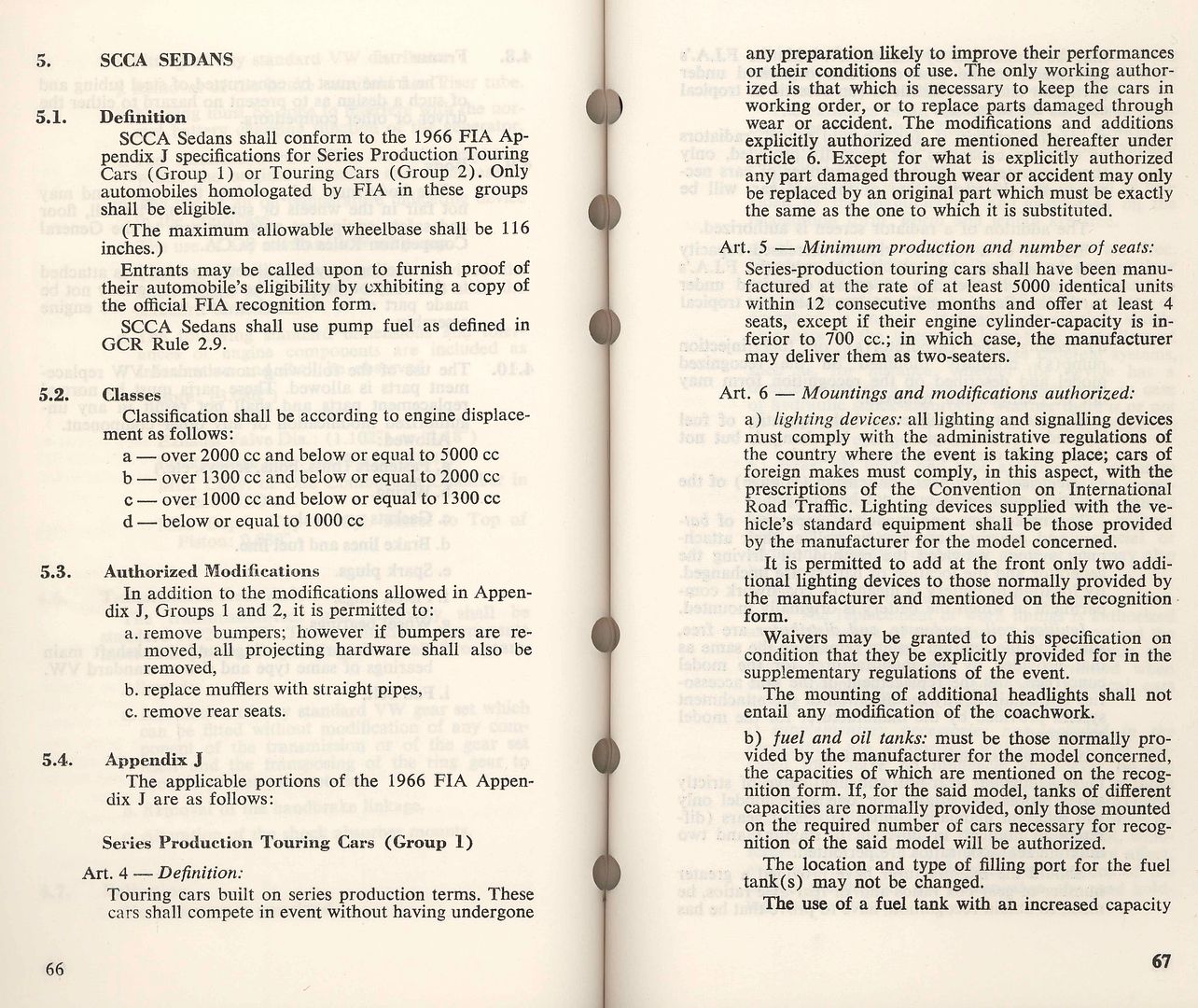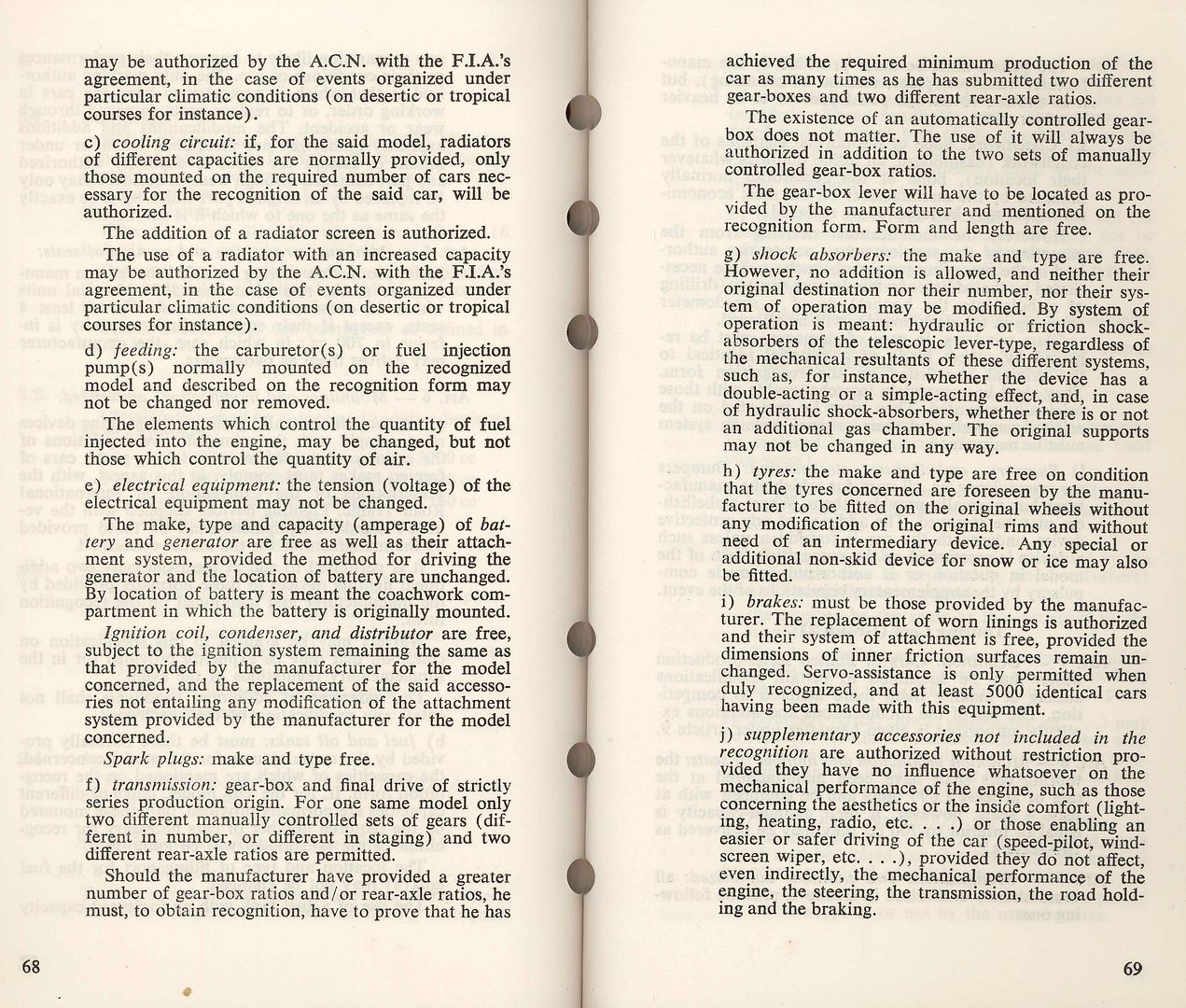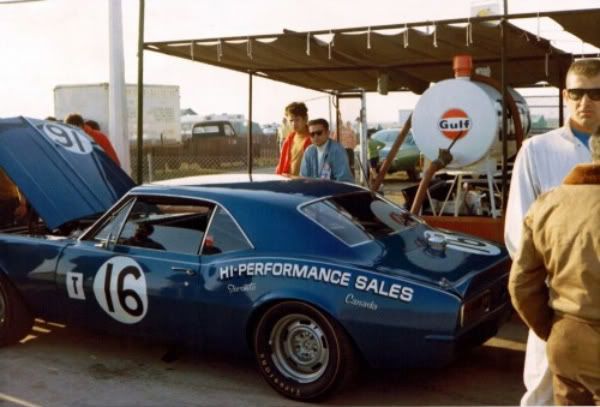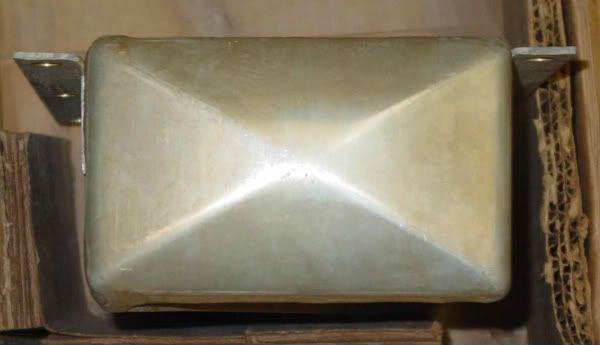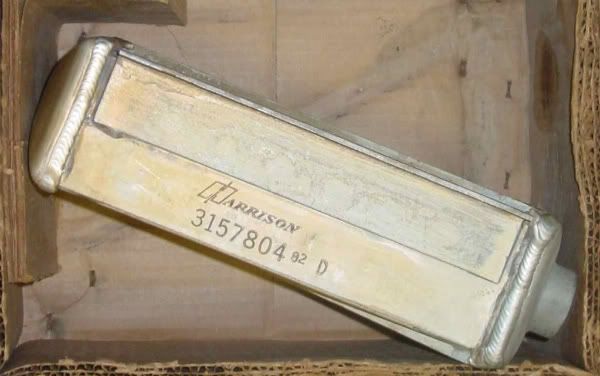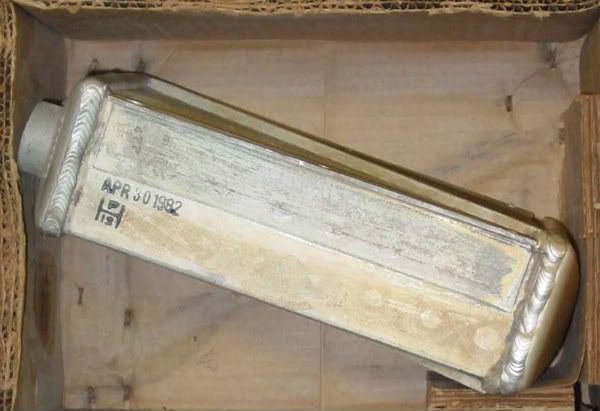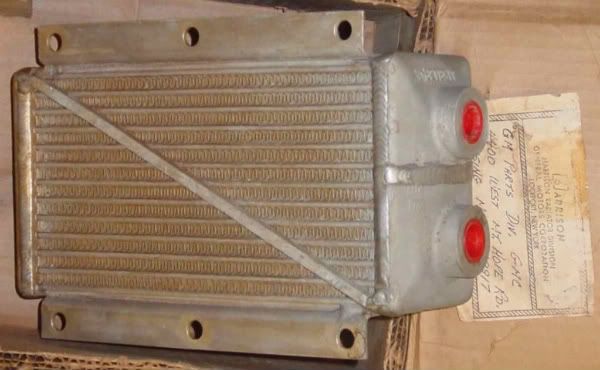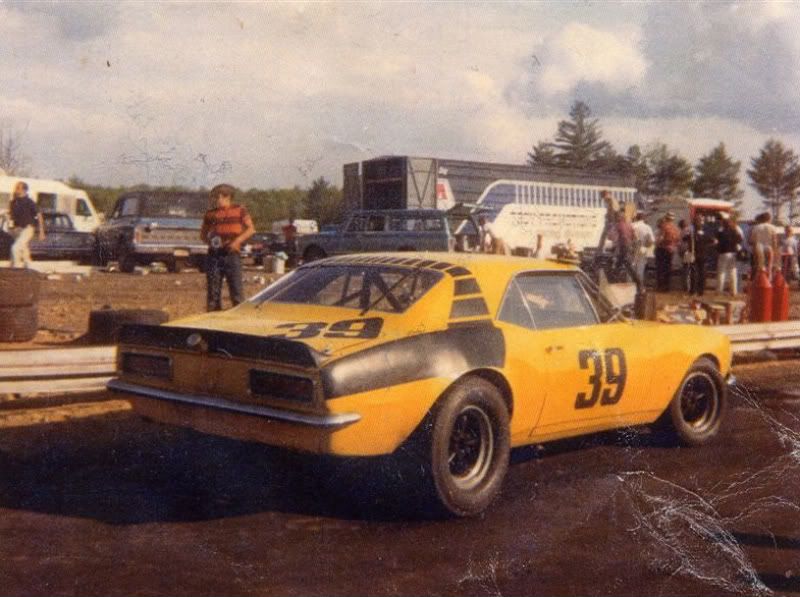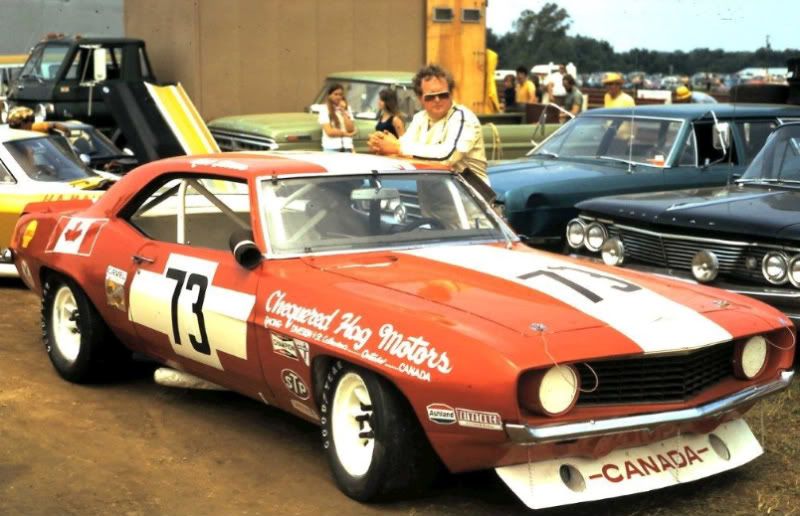WAR STORIES, ETC.....___________________________________________________________________________________________________________________________________
BEING A RACER IS HARD WORK --- Because Al, Dennis, and Roy worked at a day job during the week, they never had the time to do a thorough job of prepping the car for the next race and toward the end of the season it started to show as things would break or wear out. They were very good at getting things done in a hurry like changing a complete rear axle assembly. I can remember going to the local wreckers at Mid-Ohio in maybe ‘71 because one of the front A-arms broke in practice and we didn’t have a spare. So they were very resourceful in that way – never give up. One time, also at Mid-Ohio, we needed a front brake caliper or something to do with the brakes. They actually went out to the spectator parking lot, found a Z-28, jacked up the guy’s car and took off the part they needed – left a note on the owner’s windshield that the part would be returned after the race – imagine the nerve! I can remember going back to the car after the race and the guy was actually grateful that he could help us out – unbelievable!
___________________________________________________________________________________________________________________________________
RULE BENDING --- I think a factor that is sometimes overlooked is that the factories were bending the rules at every opportunity – acid dipping, moving firewalls, changing engine locations, moving suspension points, etc. John Timanus (SCCA’s Chief Technical Administrator) had a hard time keeping track of what they were doing. They were just as inventive as Smokey Yunick when it came to interpreting and bending rules. Incidentally, Timanus was a prince of a guy. If he saw something he didn’t like on our car (there was nothing to give us any performance advantage) he would just say “have it fixed for next race”. The independents really had no chance and that some of them like Mo Carter, Warren Agor, Warren Tope etc who managed top ten finishes was a testament to their resources and driving skill.
___________________________________________________________________________________________________________________________________
THOUGHTS ON MO CARTER --- I remember Mo racing the Camaro in ‘67. He had been racing a Yenko Stinger in ‘66 (his first year). He was a former rally driver who went road racing in ‘66. In hindsight, I don’t think he was a better racer than most of us but he was a Chevy dealer with lots of resources at his disposal and I think all the seat time he put in certainly helped. He became a good driver, but was hard on equipment, according to his crew. That ‘67 Camaro I bought was not well built, but his next Camaros were better cars. With his ‘68 and then ’69, his crew obviously learned the tricks of the trade. Mo was a good guy and I got to know him thru the years. He was always very cordial to me and treated me with respect. I didn’t know until after his death he was a decorated Canadian War hero – fought at Normandy, etc. He never mentioned any of it to me. He was also very active in service clubs and charity work in the Hamilton area. He certainly flew the Canadian flag at races all over North America, both T/A and later IMSA. He even went to Le Mans in ‘80 but ran afoul of the French racing authorities. He didn’t like their politics and the rumour was Mo made reference to their lack of fighting skills in the 2nd war.
I actually worked for Mo for 3 months in ‘69 as a sales rep. I can remember all kinds of Chevy muscle in the inventory. One day I road tested a plain looking black 69 Camaro with a 396 that had aluminum heads. It had a 4-speed and I only drove it around the block. It was as fast or quicker than the Corvette Healey I used to own. It had torque you wouldn’t believe. Can’t recall what model that would have been – maybe something specially ordered by Mo or a COPO car? He was a reserved no-nonsense kind of guy – well spoken. I don’t think he suffered fools gladly. I left his employ because the commute was too long for me and something else came up.
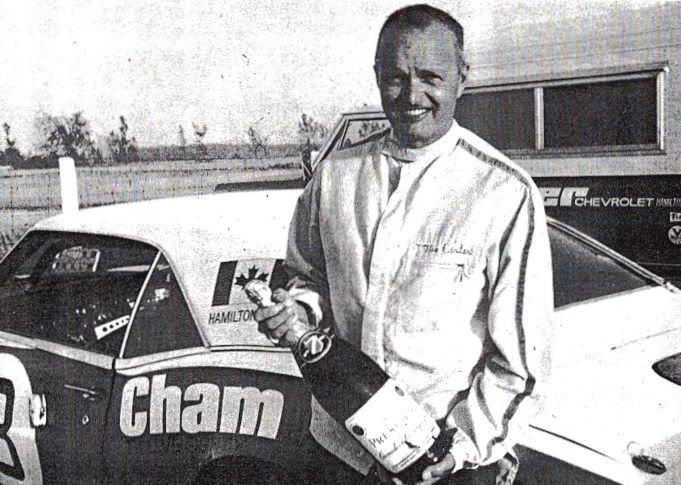 Mo Carter Photo: Robert Barg Collection
Mo Carter Photo: Robert Barg Collection__________________________________________________________________________________________________________________________________
SCARY MOMENTS --- They were always the ones in the first few laps. Because I usually qualified well back, the first few laps were busy and I took pains to stay out of trouble but there were some hairy moments. It was only important for us to make the grid as sometimes 45 cars would show up and they only started 33. We played the waiting game during the race – they were over 2 hrs. long in those days. My fastest race lap was usually 2-3 seconds faster than I qualified at. We seldom had new tires for the race and for qualifying just used the ones from the previous race. We only ran enough laps to get on the grid so as not to wear out the car.
One time at Mid-Ohio during the race, Warren Tope passed me and moved me over on the marbles and he and I both sort of did 360’s on the grass in tandem but never hit each other. He was, of course, going way too fast and never made the corner either. He was a wild man but eventually became very fast. He had access to all the good Ford stuff because his dad was a big wheel with Ford. I got off the track a few times in those early years but was never involved in a race accident – just lucky I guess. Later in 1980 I had a big crash at Laguna after a Corvette hit me in the passenger door and sailed me off the track into the tire wall in front of the bridge – wasn’t hurt but the car was a mess (the first Hoffman 70/71 Camaro).
___________________________________________________________________________________________________________________________________
GOIN’ SOUTH FOR THE WINTER --- I first went to Daytona in ‘62 to spectate at the Daytona 500 Nascar race (Weatherly, Turner, Fireball, Johnson, etc). I remember getting into the garage area. You can’t do that now. In those years we drove down to Daytona and also Sebring because we were sick of the Ontario winters by then. Sebring used to be a sleepy town in the middle of Florida and I wonder how much it has changed. The last time I went was 1980 when Mo Carter was running his big block tube frame Camaro with Craig Carter as his co driver (no relation). Lots of racing history at Sebring. It is not the same 5.2-mile track that I remember, which used those rough cement runways. I think it’s now a repaved 3.6-mile layout with very little left of the original track.
I attended every Sebring 12-hour from ’61 through ‘69, except for the famous rain race that Jim Hall’s Chaparral won in ‘65. I can’t remember why I didn’t attend that one. I must have worked as a pit marshal for at least 3 or 4 years. I thought that was great. There were two of us assigned to each car during the Sebring 12-hour. We worked 2 hour shifts, then had 2 hours off. The pit marshal’s job at Sebring was to make sure only the allotted amount of crew were over the wall working on the car and to record the time in and time out of the race car stop in the pits. Remember, there was no electronic stuff in those days. Someone would come around from timing and scoring every hour and give each crew an updated scoring list. We received no pay but we got some shirts and a free lunch every day and there was one large party for all of us each year. It was a great way to meet other enthusiasts and of course, to observe all the hysterics in the Ferrari pits – I loved it.
___________________________________________________________________________________________________________________________________
HOTSHOTS vs THE LITTLE GUYS --- I don’t think the hotshoe racers cared much about us lowlifes at the back of the grid as long as we kept out of their way. I remember looking out the rear view mirror diligently. I remember that we sort of got to know the guys in our group that were about the same speed. Never got to know the factory guys. I think we were somewhat intimidated by them, although if we needed a part I would go up and down the paddock rows to see what I could borrow or get donated. I got quite good at scrounging for parts. Our crew learned slowly about set-up etc. just by asking others and observing. There were probably only about 2 or 3 other Camaro teams that our crew got to know well. Don’t forget, we were all competing against one another and there was money involved.
___________________________________________________________________________________________________________________________________
MISCELLANEOUS STUFF --- 1971 Michigan result - the original SCCA results showed me as a "Robert Park" - a typo.
www.ultimateracinghistory.com has made the correction. I drove that race with a consistent misfire - some ignition problem if I remember, or maybe fuel related - lost about 5 seconds a lap. That was one of the Brock Yates rental ride races.
1970 Watkins Glen - I drove that race on dry tires despite having it rain for almost an hour. That was the race I was lucky to get on the grid because some guys blew their motors in practise. It was either Francois Guertin or Leon Alain who also joined me. One guy had loaded up and gone home or maybe didn't hear the call to get on the grid.
1970 Bryar - Entered, practised and qualified but didn't start because a jr. crew guy overheated the engine driving the car around the paddock - Al was not pleased and I missed the next race at Mid-Ohio before another engine was cobbled together.
1970 St. Jovite - I was almost overcome by cockpit fumes - either exhaust or gas - barely made it to the finish.
1971 Watkins Glen - The front driveshaft yolk exploded going down the front straight - I had mentioned a driveline vibration from the previous race but couldn't say where it exactly came from.
1973 T/A Lime Rock driving the 69 ex-Alfie Camaro - engine let go on the front straight.
1973 T/A Watkins Glen - I was drving (Rick Stevens was co-driver) when the rains came, the fog rolled in and the race was stopped. Mo was declared the winner. We were still using a 302 engine even though they had dropped the 5-litre limit that year. Some results say we were a DNF - not so. I had just made a stop and we put on rain tires - passed a whole bunch of guys who had been caught without.
Thanks to Al Richards for all those drives - I still have some contact with him from time to time. I paid the entry fees, if I remember - $100 each and sent the entries in too. Al did not want to drive the car - was happy just to be the owner and chief wrench.
___________________________________________________________________________________________________________________________________
TRAILER TOWING --- I remember that for one race at the Glen (can’t remember which year) I enlisted the help of a young friend for his tow vehicle – a ‘68 Ford Ranchero – well, it was useless as a tow vehicle. I was following him down our 4- lane hwy on the way to the border and the trailer started to do a tank-slapper on him – he ended up in the median in a cloud of dust, with thankfully the car still upright on the trailer. After that it was a painful 45 mph all the way to the Glen. It taught me a lesson never to use something as dumb as a Ranchero to tow a race car and trailer.
One other time Al had borrowed a stock car trailer from one of his stock car racer friends and because the thing hadn’t been used for years, all the wheels bearings seized up about 50 miles down the road from Toronto. He had to find another trailer – the whole episode was a horror show and we wasted a day – did not get to the Glen till about noon on Sat.
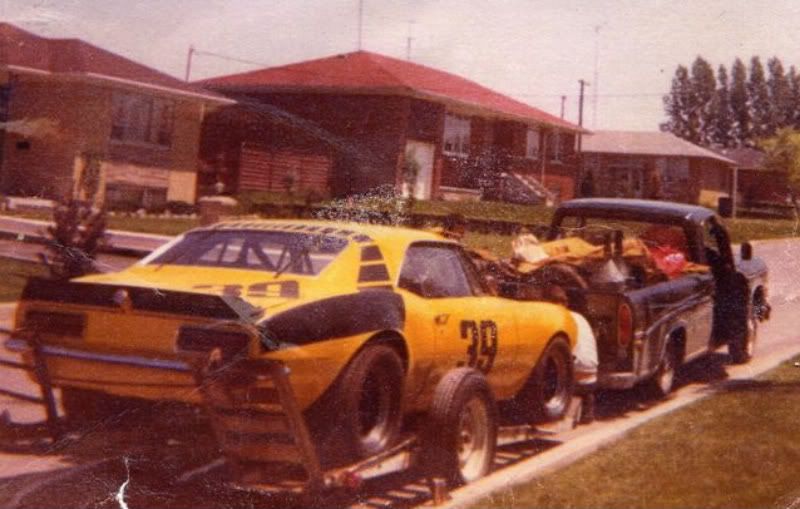 Loaded down and ready to head to the track. Photo: Robert Barg Collection
Loaded down and ready to head to the track. Photo: Robert Barg Collection Another time, because we were broke, it was decided not to pay the NY Thruway toll on the other side of Buffalo, and instead, take the old Hwy 20 to Bryar. It wound up and down the backcountry – very nice drive if you weren’t in a hurry and thru every little NY state town. In the middle of the night, about 3am, the trailer tongue broke and it dropped on the pavement, just in the middle of a small town. As luck would have it, there was one gas station open, and the attendant saw our problem and actually phoned a local welder guy to come out and fix the trailer! It only cost $20, but that was twice the NY Thruway toll of $10!
I think we barely made it to Bryar (or maybe Lime Rock) in time for Sat. afternoon practice. I remember (crew member) Roy Bean driving the tow truck and he was so tired he was weaving all over the road. I was following behind and was terrified he would dump it upside down. By the time I got to the track after that all-nighter and with no sleep, it was a wonder I could even drive.
So you can see, we had some drama and weren’t even yet at the track! It was all part of the racing experience – in hindsight I wouldn’t have missed it for the world.
